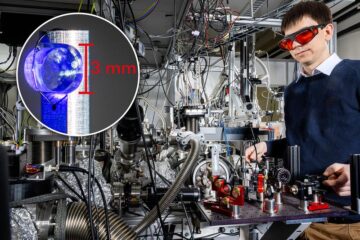Patients’ own stem cells used to cure incontinence

Austrian researchers are successfully treating incontinent women with the patient’s own muscle-derived stem cells. The findings of the first clinical study of its kind were presented today at the annual meeting of the Radiological Society of North America (RSNA).
“Urinary incontinence is a major problem for women, and for an increasing number of men,” said Ferdinand Frauscher, M.D., associate professor of radiology at the Medical University of Innsbruck and the head of uroradiology at University Hospital. “We believe we have developed a long-lasting and effective treatment that is especially promising because it is generated from the patient’s own body.”
The stem cells are removed from a patient’s arm, cultured in a lab for six weeks, and then injected into the wall of the urethra and into the sphincter muscle. The result is increased muscle mass and contractility of the sphincter and a thicker urethra. Many patients have no urinary leakage within 24 hours after the 15- to 20-minute outpatient procedure.
Stress incontinence affects nearly 15 million people – primarily women – around the world. It occurs when the urethra narrows or becomes otherwise abnormal, or when the sphincter muscles that help open and close the urethra become weak or diminished, causing urine leakage when an individual exercises, coughs, sneezes, laughs or lifts heavy objects.
Twenty females, ages 36 to 84, who were experiencing minor to severe stress incontinence participated in the research. Muscle-derived stem cells were removed from each patient’s arm and cultured, or grown, using a patented technique that yielded 50 million new muscle cells (myoblasts) and 50 million connective tissue cells (fibroblasts) after six weeks. When implanted into the patient under general or local anesthetia, the new stem cells began to replicate the existing cells nearby. One year after the procedure, 18 of the study’s 20 patients remain continent.
“These are very intelligent cells,” Dr. Frauscher said. “Not only do they stay where they are injected, but also they quickly form new muscle tissue and when the muscle mass reaches the appropriate size, the cell growth ceases automatically.”
Since the stem cells must be in contact with urethra and sphincter tissue for the procedure to work, a major factor in the success of this treatment was the development of transurethral three-dimensional ultrasound. “With real-time ultrasound, we are able to see exactly where the new cells must be placed,” Dr. Frauscher said.
Stem cells are unspecialized cells capable of renewing themselves through cell division. Scientists believe that adult stem cells are located in small numbers throughout the tissues of the human body, where they quietly reside until activated by disease or injury and begin dividing. In addition to repairing body tissue, stem cells can be induced to become cells for specialized functions of the body.
Dr. Frauscher said the cost of the stem cell procedure was comparable to two popular treatments for incontinence: the long-term purchase and use of absorbents, such as adult diapers, and collagen injections, which show improvement during the first six months but often result in symptoms returning after a year. Dr. Frauscher also said the stem cell treatment appears to be more successful with women at this time. For men, incontinence is often caused by prostate surgery, which may result in scar tissue formation, where the stem cells do not grow very well. In men without scar tissue stem cell therapy seems to work as well as in women, Dr. Frauscher said.
Co-authors of the Austrian study are Andrea Klauser, M.D., Dieter Zur Nedden, M.D., Leo Pallwein, M.D., Rainer Marksteiner, Ph.D., Hannes Strasser, M.D., and Georg Bartsch, M.D.
Media Contact
More Information:
http://www.rsna.orgAll latest news from the category: Life Sciences and Chemistry
Articles and reports from the Life Sciences and chemistry area deal with applied and basic research into modern biology, chemistry and human medicine.
Valuable information can be found on a range of life sciences fields including bacteriology, biochemistry, bionics, bioinformatics, biophysics, biotechnology, genetics, geobotany, human biology, marine biology, microbiology, molecular biology, cellular biology, zoology, bioinorganic chemistry, microchemistry and environmental chemistry.
Newest articles

Biomarkers identified for successful treatment of bone marrow tumours
CAR T cell therapy has proven effective in treating various haematological cancers. However, not all patients respond equally well to treatment. In a recent clinical study, researchers from the University…

She deciphers how tomato roots communicate
Ora Hazak has always been fascinated by plants and is studying the signals that roots send to the rest of the organism. She aims to understand this communication in order…

Laser excitation of a nucleus
A long-awaited breakthrough opens the door to a new type of atomic clock and the investigation of fundamental questions in physics. After decades of investigation, researchers made an extraordinary quantum…





















